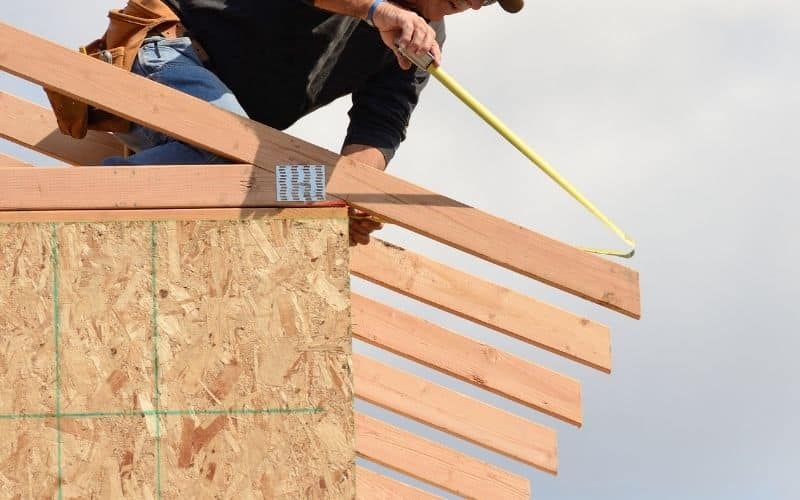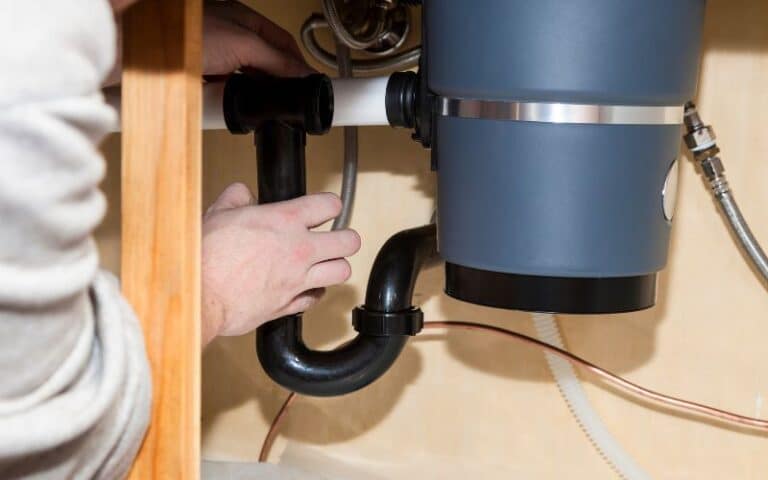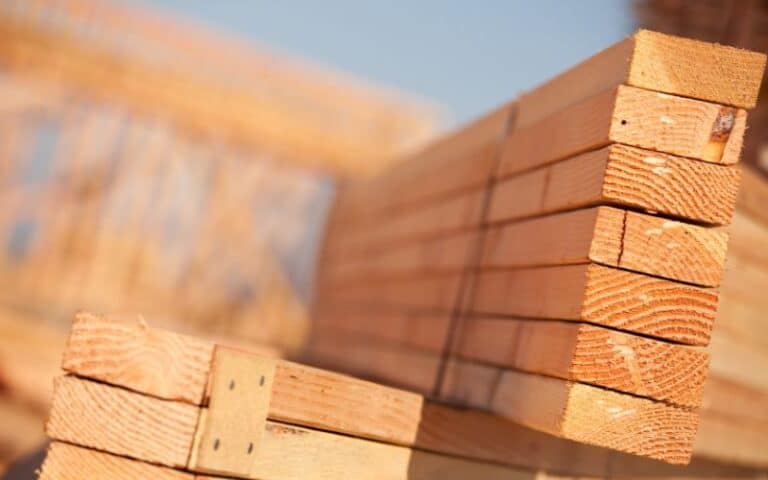If you’re building or remodeling a house, you have many questions to ask the architect and builder, such as what type of roof should I have?
How Many Overhangs Should A Plywood Roof Have? Not only are these details essential to the structural integrity of your home, but local and international building codes may also dictate them.
So, knowing this information beforehand can save time and money and keep your project running smoothly. This article will explain how much overhang a plywood roof should have.
The plywood roof decking overhang isn’t a one-size-fits-all building question. The local building codes determine trim length; low-snow areas require less overhang to cover the ice. The average eave trim should be 2-3 feet. In low-snow regions, you may require less than 3 feet of overhang, while in snowy areas, you’ll need more than 3 feet.
Ready for a Roofing Quiz?
What Is the Standard Overhang For a Plywood Roof?

Regarding attaching structural plywood sheathing to a truss-based roof structure, various standards dictate how far you can extend such surfaces without voiding your building permit.
The overhang itself is called a fascia or drip edge. The term “overhang” refers to the trimming that projects beyond your fascia and serves as a protective drip edge and an attachment point for the gutter.
It can vary depending on where you live, but generally speaking, you can extend your fascia around 2 inches past where you attach your deck boards or rafters without cutting into your building permit.
Overhangs are critical for rainwater drainage. If a building does not have proper gutters, I recommend that you add 1 inch of extra overhang every 10 feet.
The standard fascia drip edge can be an extension of your sheet plywood nail; this will keep water from pooling around your fascia and downspouts and help divert water away from your home.
The overhang is multiple, so the sheeting overhangs 3/4-1′′, followed then a drip edge, then one ′′ if using shingles.
If utilizing metal, drop 3/4-1″ past wood sheets. If utilizing gutter, keep the overhang to 1-1/2″.
Best Way To Recognize Overhang For Plywood Roof
Plywood roofs can last longer than asphalt or composite shingles if well built and cared for properly.
Plywood roofs do not create an additional hazard in the event of a fire or explosion as they only contain wood.
They are particularly efficient at insulating homes, which means that people who live in areas where it gets cold will benefit greatly.
The fascia drip edge protects any exposed nails or screw ends. If you see these on your roof, it indicates that you don’t have enough overhang (which means water will be able to reach your plywood decking).
How Far Should Roof Sheathing Overhang Rafter Tails Be?
Once the rafter is 45-3/4 inches from the truss tail’s cut end, you should snap a line.
It marks the upper edge of the first row of roof sheathing, leaving a sufficient overhang so that the sub fascia and fascia can be tucked neatly underneath at the appropriate time.
The standard overhang on a roof can extend outwards to a maximum length of two feet, preventing the majority of damage that could occur on a roof.
You can make your roof overhangs extend further than 2 feet, but after reaching this length, they lose their structural integrity, and you need to support them from the outside.
There are many other things to consider in deciding how far to extend your sheeting beyond your rafter tails.
The other significant consideration is what your local building code and homeowners’ association rules require.
Most codes limit how far beyond rafter tails you can extend sheathing material, but some allow it to overlap up to 24 in. or even more. Check with your local code officials.
Some HOA rules also restrict overhangs, while others don’t have specific guidelines. Check with your HOA if you’re unsure whether there are any restrictions on extending sheeting past rafter tails.
If you can extend sheathing beyond rafter tails but want to do it in a manner that looks good and follows best practices, follow these guidelines.
First, lay out one end of your sheeting and determine how far past your rafter tails you want to extend it.
Leave at least 2 inches for nails or screws to fasten it down properly, then add another 3 inches for overlap if you use beveled edges.
Remember that if you plan to install several courses of your sheeting, each must be long enough to cover at least three times its width.
For example, if you’re using 1/2-inch-thick sheeting should be at least 12 inches wide so that you can fasten three courses together without exposed edges.
In addition, you’ll need an overhang at least 18 inches above your rafter tails or 20 inches.
Suppose you’re going to use square-edged sheathing. If your local code or HOA rules allow for overlaps of more than three it may be acceptable to extend your sheeting out that far and leave only 1⁄2 in.
overlap, but check with them first to ensure. Otherwise, don’t go beyond 3 inches.
How Do You Lay Plywood Sheathing On a Roof?
To lay plywood sheathing on a roof, you should follow these steps. First, choose the appropriate thickness or span application for the plywood roof decking you are installing.
Next, choose the proper thickness or span application for the plywood roof decking you are installing.
First, check if your roof’s framing, rafters, and top truss chord align correctly. You can straighten out any portions of the twisted frame with the help of blocking, which will also give a flat surface for the panel.
You can straighten out any pieces of the rough framing with the use of blocking, which will also provide a flat surface for the panel.
After that, mount the panel parallel to the rafters or truss chords. It would be best if you linked the ends of the panel over the support.
The supported panel joint needs to have a bearing of at least half an inch, and you should position it to rest along the center line of the framing.
Be careful to leave a space of 1/8 inch between the panels at the borders and ends.
It would be best if you used an 8D standard or deformed nail shank to secure the board.
Install the first set of fasteners at one end of the panel, and then begin placing the intermediate fasteners at one of the panel’s edges.
Attach the panel in rows across its width, repeating this pattern along the panel’s line.
Performing this step will prevent the board from becoming subject to an accumulation of internal tension, and you should drive the fastener such that it is flush with the panel’s surface.
The distance between the fastener and the panel edges should be 3/8 inch, and for standard installations, the panel edges should have nails set every 6 inches. The intermediate support should have nails spaced every 12 inches.
Check the local building codes to ensure you comply with the minimum nailing requirements.
When necessary, you should install panel edge clips. Ensure you satisfy the code’s requirements in your area by installing sufficient roof ventilation.
You have to protect your roof from the elements, so I recommend installing shingle underlayment or roofing felt.
If you do not give the panels exposed to the rain enough time to dry and do not position the underlayment so that it is flat and smooth, the shingles may not lay properly, which can cause issues with the aesthetics of the roof.
Finally, it would be best to verify your local building codes regularly because they can have additional or different installation requirements.
Conclusion
To extend your plywood roof decking, ensure you check your local building code to know if you meet the criteria.
If you’re looking to extend your roof overhang for aesthetic or structural reasons, you’ll need to consider how much weight it will need to support and follow the steps in the article.






